Ghost Net Landscape interactive installation & performance!
Posted on · Categories Exhibits, Sculpture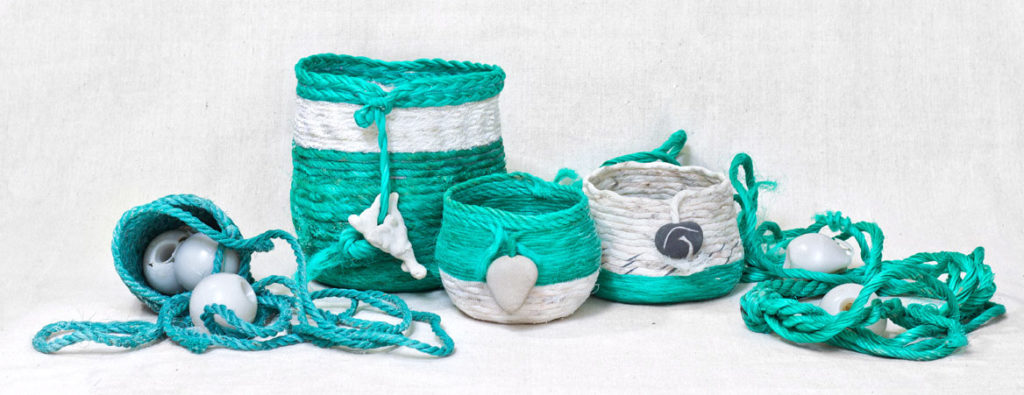
I am excited to announce the launch of my Ghost Net Landscape project! I’ll be collaborating with visitors over four weeks at each gallery, transforming a massive pile of “ghost net” fishing rope waste into finished sculptures.
You. Me. 600 pounds of ghost net. Mark your calendars to join us if you can!
May 2 – June 23, 2019 — Elisabeth Jones Art Center, Portland OR
October 7-31, 2019 — Cawein Gallery at Pacific University, OR
I’d love to have your help bringing this project to life! The Ghost Net Landscape is not possible without your support. You can:
- Sponsor a basket
- Bring me rope
- Help transport the pile of rope
- Come create artwork with us in the gallery!
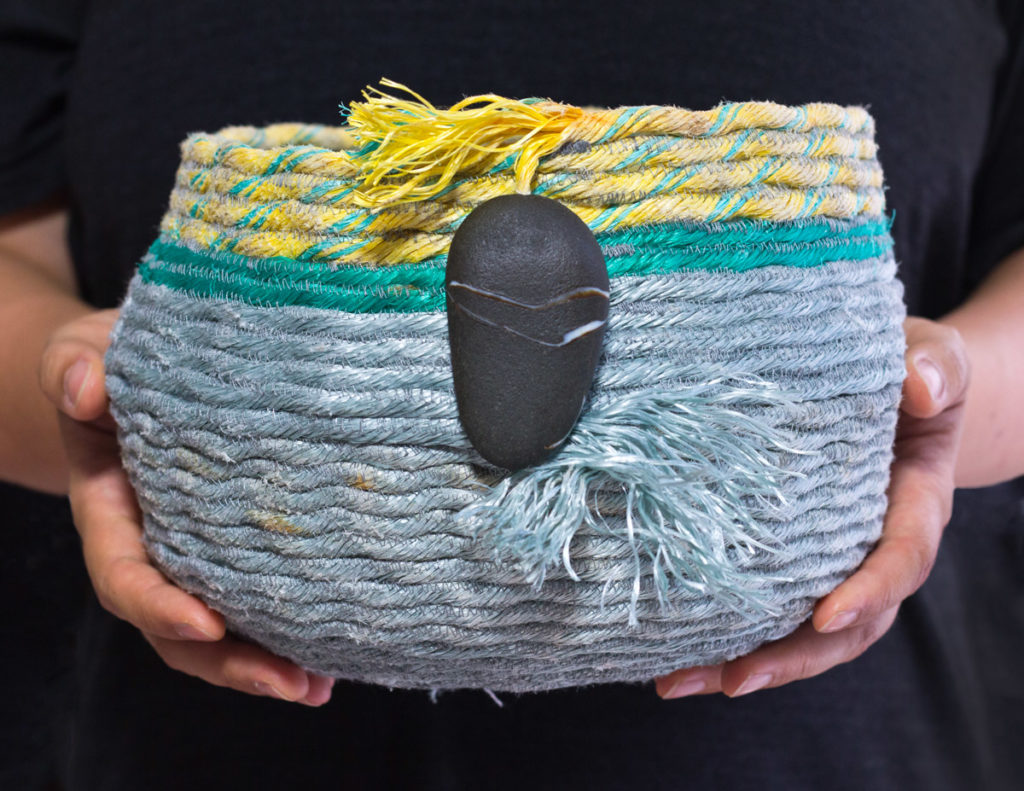
1. Sponsor a basket!
Basket pre-order sponsorships will help fund the transportation and processing of materials, as well as artist fees. This project will occupy all my working hours for the months of May and October, and significant portions of time before and after. Click here to reserve a piece of the project now!
2. Bring me rope!
The exhibit can accommodate up to 600 pounds of rope (about 2 pickup trucks’ worth), so bring it on! Are you flying between Portland and Kauai with an extra suitcase? Surfrider Kauai would love to fill it up with rope (sealed in a clean bag, of course!). Are you able to start collecting rope on the northern Oregon coast? Or join me on March 23 for the Oregon SOLVE beach cleanup (and rope collection day!) Click here to get in touch and let me know!
3. Help transport the rope
Moving heavy things is so much easier with a group of people and a truck or two! I will most likely need to move the rope several times. Contact me if you can lend a hand!
- Westport, Washington to Beaverton around April 15
- Beaverton to Portland around April 30
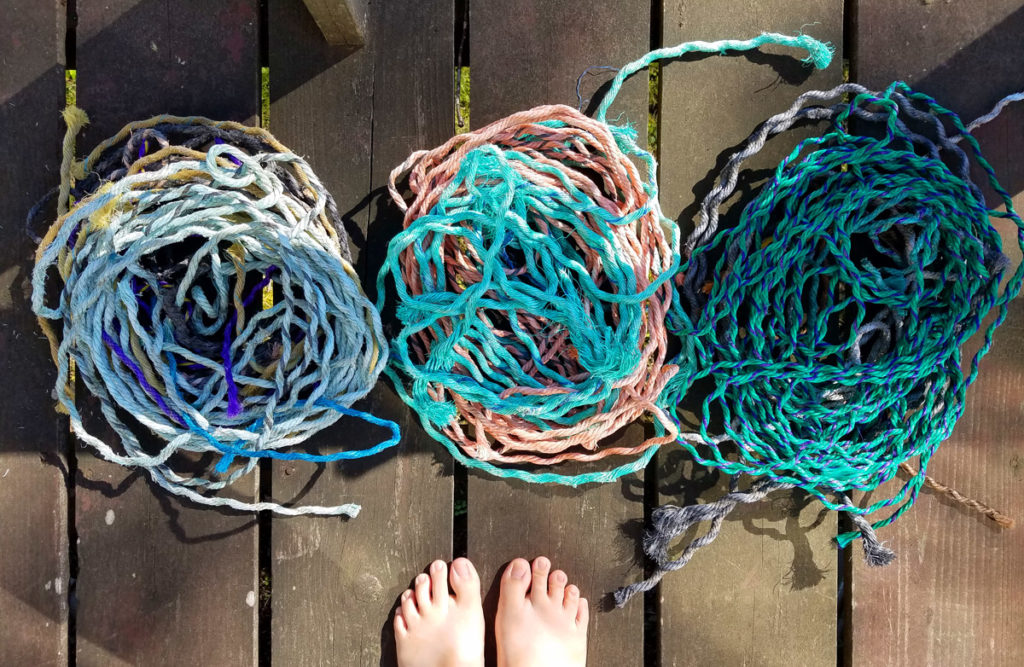
The beginnings of an idea…
One year ago, I was on Kauai salvaging a suitcase worth of ghost net from a two-ton landscape made of trash. It was a surreal afternoon, climbing on a huge soft sculpture of marine waste, mountains and valleys created entirely from ghost net pulled off the beaches by Surfrider Kauai in just two months. By the time I had taken the rope home, unraveled and cleaned it, and stitched it into seven baskets, another five tons of ghost net had likely washed up on Kauai’s shores.
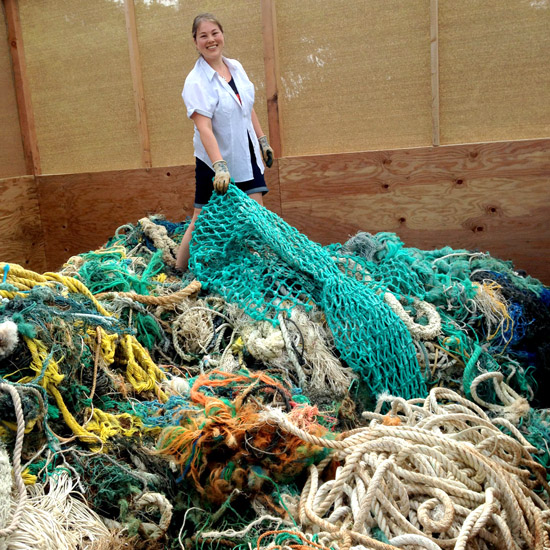
This experience made a deep impression on me. I had started making ghost net baskets three years earlier, and I knew the nets were one of the most abundant and dangerous sources of ocean trash. I knew that ghost net made up almost half the mass of the Pacific Garbage Patch, a floating, dispersed trash heap twice the size of Texas. None of this compared to being faced with the physical presence of the accumulated nets, which created an environment, a landscape, a powerful ecosystem that I could touch, surrounding me on all sides.
It was also fun climbing on the pile of ghost net. After years in the ocean, the rope was still bright and colorful, more like buried treasure than hazardous waste. Wind and waves had softened different pieces into fuzzy, knotted sculptures in their own right. If I found no joy in making this artwork, I could not continue to create it – despite the ambivalence of experiencing that joy.
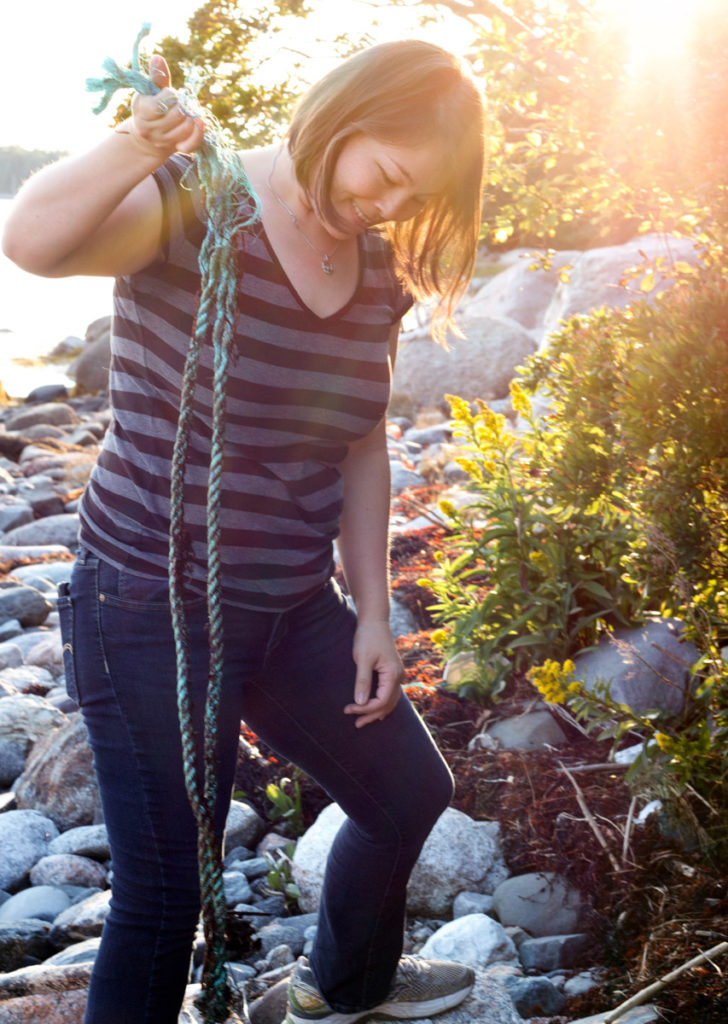
Sharing all this was the natural next step. I envisioned the massive pile in a pristine gallery space, where its weight could be considered as a sculptural, cultural object. Working in the gallery also pushes directly against the idea of art as precious and untouchable. Throughout the exhibit, I’ll be leading visitors in pulling apart the nets to be transformed into finished sculptures.
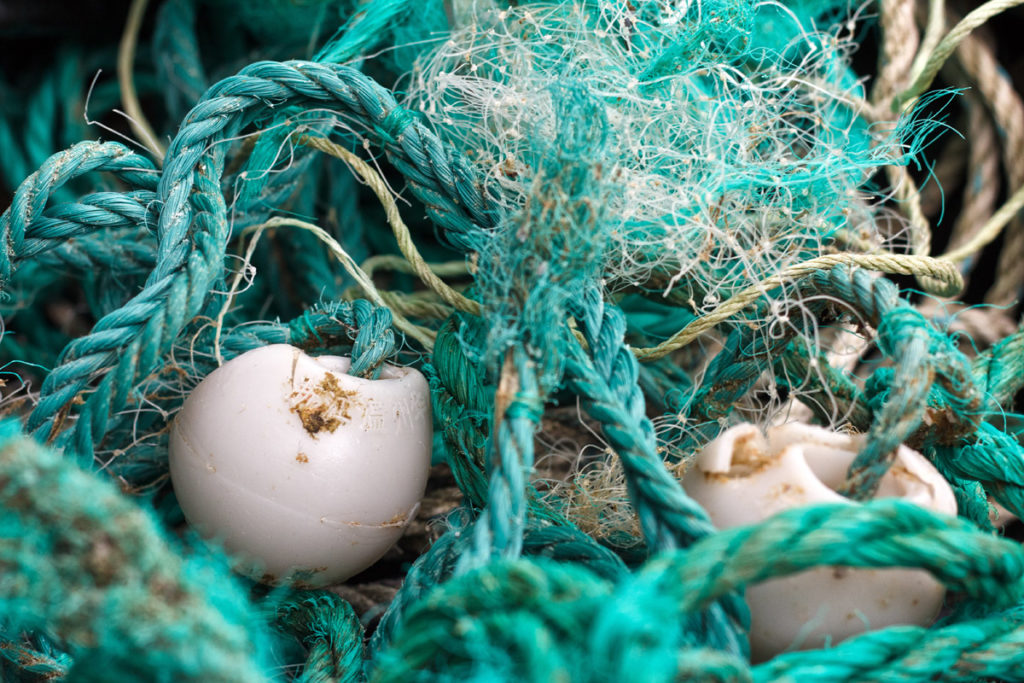
Our daily work in the gallery will be documented as a time-lapse video. How many collaborators, spending how many hours, are able to process how much rope? How many finished sculptures can be made? At the close of the exhibit, how much is still left unused – and what happens to it next?
I’ll be continuing my partnership with Surfrider Kauai as a source of raw materials, and I hope to partner with Oregon beach cleanup groups as well. I’ll be sharing regular updates as I gather materials, confirm partnerships, and start work on new designs!
 Emily Jung Miller
Emily Jung Miller



A moving summary, a microcosm of the problem created by some people and left on future shores for others to unravel. I will help. Since we talked, I have been visited by ideas of rope-assisted paintings and container imagery. Congratulations, it’s a beautiful idea and worthy focus.
Thanks so much Laura! Looking forward to working with you in the gallery 🙂
That is totally awesome that such waste can indeed be a treasured art or a vessel used as a working utensil. I found your work inspiring. Thank you!
Wow this is amazing, and integrated into real life (cleaning up our mess). I love the idea. Being in Bend, OR and having a hard time traveling may mean I can’t attend, but if I feel up to driving over the mountains, I’d love to be there.
Thank you Karuna! I’d love to meet you if you are able. I’ll be posting lots of photos and video here and on Instagram, for all long-distance supporters!
I just received an email from CBBG referring to your wonderful project of Ghost Net as art. As a lifelong “knot head”, I’ve always been looking for recycling opportunities with all kinds of cordage and rope. Maybe you would consider another use of certain ghost net…I have for years been making door mats and such with a weaving technique using a simple jig. I call the finished product the “Wee Blasting Mat”. If this is something you might like to know more about, it would be my pleasure to talk to you. Blessings to you & your pursuits. Namaste, Maggie Machado
Hi Maggie, I’d love for you to join us in the gallery to share your techniques! I’ll be in touch.
Saw your baskets at Elizabeth Jones Art Center. beautiful
Thanks so much Renita! I hope we have a chance to cross paths during the installation at Crema!